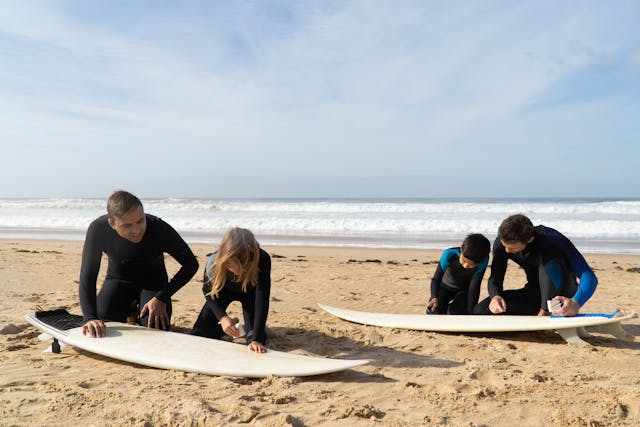When planning a Kauai vacation, learning to surf can be one of the most memorable experiences. The island’s warm waters, gentle waves, and stunning beaches make it an unforgettable place to start.
That’s why Kauai surfing lessons are so popular—because the right instructor doesn’t just help you stand on a board; they also guide you through ocean safety and local conditions. But not all surf lessons are created equal.
Choosing the right one can make the difference between a great adventure and a dangerous one. Here are key things to consider when selecting your surf lesson, especially on Kauai, so that you’ll ride waves with confidence and safety.
Understand the Conditions and Your Timing
Kauai’s surf and ocean conditions vary dramatically depending on the season, beach, and weather. Winter months tend to bring larger swells, especially on the north shore, while summer often brings gentler waves on south-facing beaches.
Before you book for Kauai surfing lessons, check official surf and marine forecasts—such as those from Kauai County or NOAA—to understand wave sizes, tides, currents, and any beach warnings. Kauai County offers a “Weather Forecast and Surf Reports” service that displays surf reports from NOAA and local buoys.
Look for Certified Instructors and Small Class Sizes.
When selecting your surf lesson, ensure the instructors are certified (CPR, water safety) and have experience teaching in Kauai’s specific surf zones. Beaches that are lifeguarded are much safer, especially for beginners. The best schools limit class sizes so each student gets adequate attention.
For example, Hanalei Bay Surf School offers both private and group lessons. If you want more personalized guidance or have special needs, a private lesson might be better. But group lessons can offer fun, social learning if the group isn’t too large and the instructor is attentive.
Choose the Right Beach and Surf School Location
Where you learn to surf on Kauai matters; Poʻipū Beach, on the island’s south shore, is a popular choice for beginners due to more moderate surf and reliable shore breaks. If the course offers all land-portion instruction right at the surf break, without extra transport, that’s an added convenience.
Also, look for review-based evidence from past students: what was the beach like? Was the water calmer than in the online photos? Did weather or currents make a difference? Checking reliable sources like the state ocean safety or lifeguard agency websites can help.
Safety Features: Gear, Instruction, and Policies
A good surf lesson will include quality surfboards, safety gear, rash guards, sun protection, and clear instruction on ocean safety. Make sure the lesson includes a land-based introduction that covers topics such as how to fall, how to avoid board strikes, how to read waves, and how to handle currents.
Additionally, check policies around minimum swimming ability. Most schools require basic swimming ability—otherwise the risk increases dramatically. Weather contingency policies are also important: what happens if the surf suddenly becomes dangerous? Is there a cancellation or rescheduling option?
Cost, Duration, and Experience Level
Surf lessons vary widely in terms of cost and what’s included. Private sessions are costlier but give more time in the water and more individualized feedback. Group lessons tend to be more affordable but may move at a slower pace given varying skill level among students.
Think about what you want to get out of the lesson. If this is your first time, a 60- to 90-minute lesson with a focus on safety, stance, paddling, and catching a few small waves might be perfect. If you have some experience, you might prioritize advanced techniques or surf spots with more challenging waves.
Key Takeaways:
To sum up, when choosing surf lessons on Kauai:
- Pick your time and beach to match your comfort and surf level.
- Use instructors who are certified, with small class sizes.
- Verify the beach is appropriate—moderate surf, lifeguarded if possible.
- Ensure the lesson includes safety gear, land-based prep, and strong ocean knowledge.
- Match the lesson type (private vs. group), duration, and cost to what you want to achieve.




